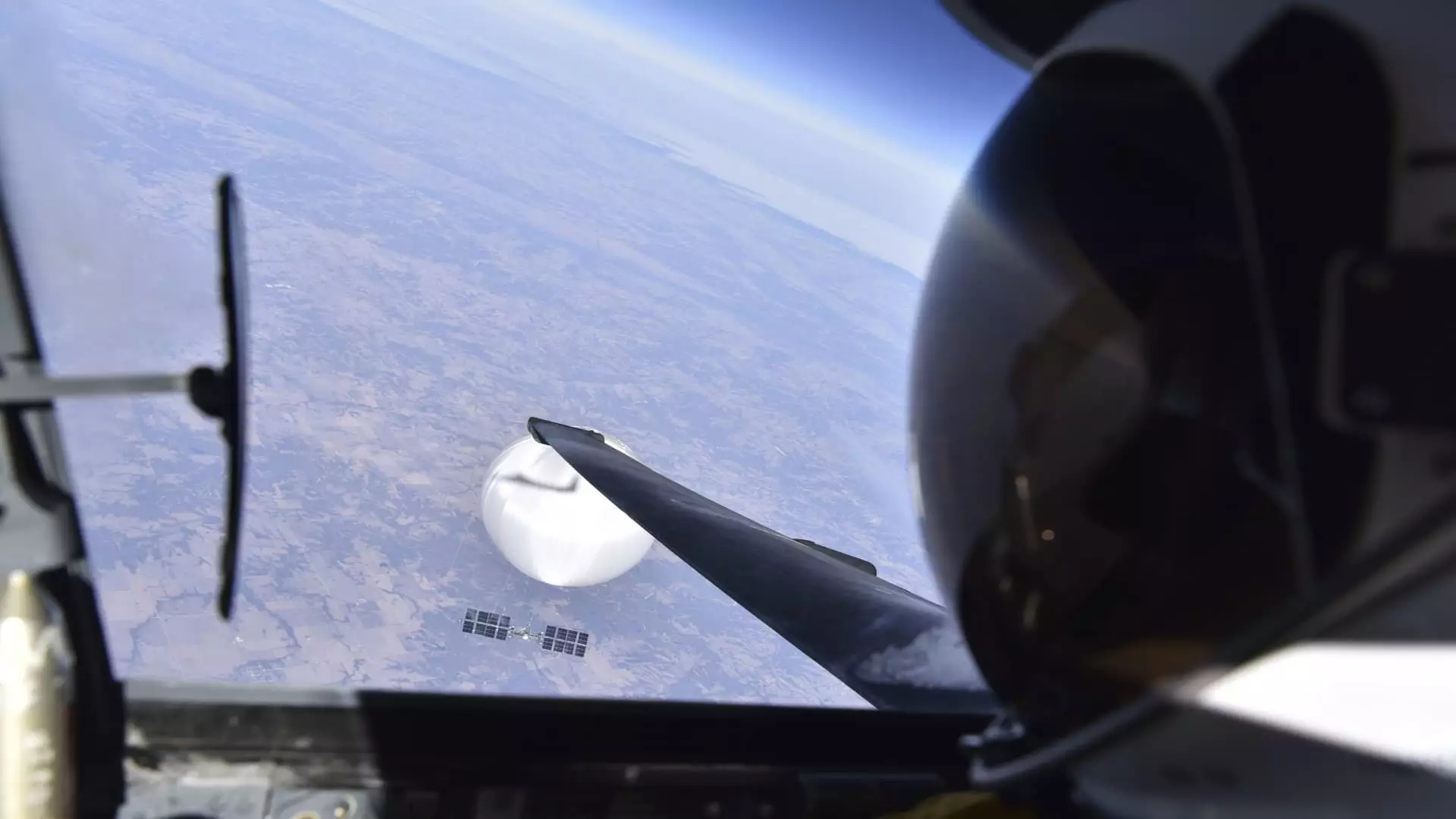U.S. intelligence officials have made a significant discovery regarding the Chinese spy balloon that crossed over the United States earlier this year. It has been determined that the balloon utilized an American internet service provider to communicate with China. The assessment, based on information from two current and one former U.S. official, revealed that the balloon connected to a U.S.-based company, enabling it to send and receive communications primarily related to its navigation.
The connection to an American internet service provider allowed the balloon to transmit burst transmissions, which are high-bandwidth collections of data sent over short periods of time. This finding prompted the Biden administration to seek a court order from the Foreign Intelligence Surveillance Court to collect intelligence on the balloon’s activities while it was in U.S. airspace. The specific ruling by the court has not been disclosed, leaving details regarding the extent of the surveillance unclear.
The American internet service provider implicated in the balloon’s communication denied any involvement, stating that they conducted their own investigation and conversations with U.S. officials. The company concluded that the Chinese balloon did not use its network. NBC News has chosen not to disclose the provider’s name to protect the identity of its sources.
When approached for comment, a spokesperson for the National Security Council referred questions to the national intelligence director’s office, which declined to provide a statement. Meanwhile, Liu Pengyu, a spokesperson for the Chinese Embassy in Washington, maintained that the balloon was simply a weather balloon that accidentally drifted into American airspace due to weather conditions and limited self-steering capability.
Covert use of commercially available service providers by Chinese intelligence officials is not unheard of. Former U.S. officials have attested to this practice, noting that China often seeks out encrypted networks or those with robust security protocols to ensure secure communication. These backup networks serve as alternative channels for communication in case primary channels are compromised or inaccessible.
Based on this previously undisclosed effort to monitor the balloon’s communications, it is possible that the Biden administration obtained valuable intelligence from the device during its flight over U.S. territory. Senior administration officials have claimed that they were able to safeguard sensitive sites on the ground precisely because they closely tracked the balloon’s projected flight path. To prevent the balloon from collecting imagery or video, the U.S. military took precautions by relocating or obscuring sensitive equipment.
General Glen VanHerck, the commander of the North American Aerospace Defense Command (NORAD), emphasized the exhaustive steps taken to prevent intelligence collection during the balloon’s transit across the United States. His collaboration with U.S. Strategic Command resulted in the reduction of emergency action messages to minimize the balloon’s ability to collect them.
These emergency action messages (EAM) are highly classified communications that enable U.S. leaders to communicate with strategic forces worldwide, including directing nuclear-capable forces during a nuclear war scenario. Safeguarding EAM and nuclear command and control communications is a matter of critical importance to the United States.
Upon the balloon’s interception, a senior State Department official disclosed that it was equipped for surveillance and signal intelligence collection. The balloon featured multiple antennas, including an array with the capability to collect and geolocate communications. Additionally, the balloon was powered by sizable solar panels that generated sufficient energy to operate intelligence collection sensors.
Despite these advanced features, defense and intelligence officials have concluded that the balloon was unable to transmit intelligence back to China while it was over U.S. airspace. A classified report was prepared by the FBI forensics team responsible for examining the balloon and its equipment, but the findings have not been publicly shared.
Proceedings related to surveillance court orders occur in secret, and federal judges presiding over these cases determine whether there is probable cause to surveil a foreign power or foreign agent in order to obtain foreign intelligence information. The court’s rulings and proceedings are classified, further limiting the available information on the case.
The discovery of the Chinese spy balloon utilizing an American internet service provider has raised concerns about communication security and potential intelligence gathering capabilities. The response from involved parties has varied, with the provider denying involvement and the Chinese Embassy affirming that it was a harmless weather balloon. As details surrounding this incident continue to emerge, it underscores the importance of monitoring potential threats and safeguarding sensitive information to ensure national security.

Leave a Reply